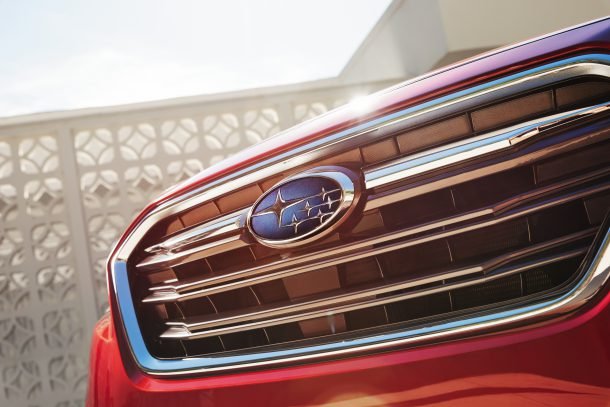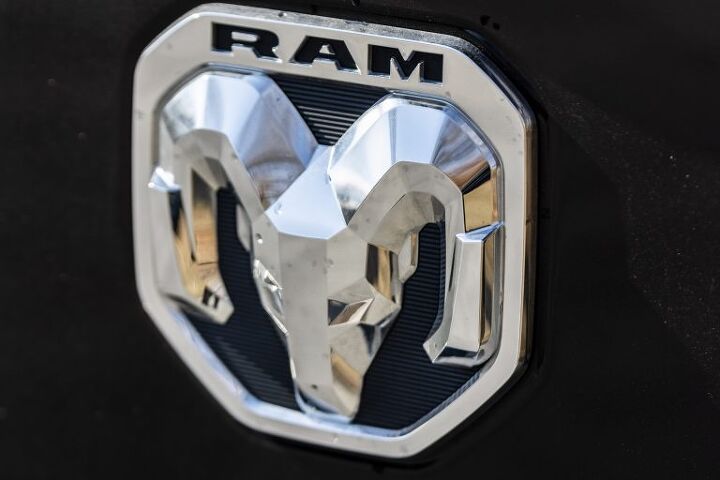#platforms
Toyota Sets Aside $391 Million for Texas-made Pickups
Toyota Motor Manufacturing Texas is slated to receive a $391 million investment earmarked for streamlined pickup production. The manufacturer wants to merge the Tacoma and Tundra models onto a common platform, something we’ve mentioned in the past, and Toyota’s Tuesday announcement solidifies those rumors.
The new platform is meant to make hybridization easier and provide the basis for the entirety of the automaker’s global truck line — including SUVs like the Sequoia.
Report: Future Jags, Land Rover Could Boast Bimmer Baby Daddy
Eager to reduce R&D costs, Jaguar Land Rover and BMW forged a cross-channel bond earlier this summer, but the increasingly cozy relationship between the Anglo-German rivals likely won’t end with the mere sharing of electric drive units and internal combustion engines.
A number of JLR vehicles poised to drop from the product pipeline could come to fruition thanks to a piece of Bimmer architecture.
Thanks, Toyota: Subaru to Gain an Electric Crossover, EV Platform
This is what handing 16.8 percent of your company’s ownership to another automaker gets you. Just days after BMW and Jaguar Land Rover announced an electric powertrain agreement, Subaru and Toyota claim a new, shared electric vehicle platform is on the way, as well as a jointly developed crossover.
The effort will mean Subaru — a brand with only a single (Toyota-assisted) plug-in hybrid on the market — will finally have the means to enter the growing EV field.
Honda's Plan: More Hybrids, Fewer Trims, and a New Platform
Honda CEO Takahiro Hachigo provided a run-down of his company’s future on Wednesday, revealing a new global architecture slated to underpin a slew of vehicles in the coming decade.
Efficiency was the thread connecting all of Hachigo’s promises — efficiency in development, in manufacturing, and in driving. The company feels it has a good thing in its two-motor hybrid system, so a decision was made to spread it around. As for upcoming models, Honda suggests its future lineup might not be as diverse as it is today.
Thinking Caps On: Before Buyers Get Their Hands on It, Ram's Midsize Pickup First Needs a Platform
Fiat Chrysler remains adamant that its new Jeep Gladiator won’t be its only midsize pickup truck, but consumers had best hunker down for a wait. While the company announced the development of a conventional midsizer in last year’s five-year product plan, the new offering won’t appear until the end of that window.
Between now and 2022, CEO Mike Manley and the team at Ram must find a way to offer a midsize pickup at a price point designed to woo Colorado, Ranger, and Tacoma intenders. First on the to-do list is finding a platform.
What Dealers Want: Mitsubishi's Still Hot for Pickups, but the Waiting Is the Hardest Part
Comfortably secure in its Renault-Nissan Alliance embrace, Mitsubishi’s topmost desire is to see more dealerships in the United States. Ideally, a total of 400 by the end of this year. For dealers that actually sell Mitsubishis, product is top of mind — specifically, a truck.
Everyone’s getting into the game, yet Mitsubishi hasn’t fielded a pickup in the U.S. since the ill-fated Raider (a rebadged Dodge Dakota) met an ignominious end during the Great Recession. That’s expected to change now that Mitsu’s leading the midsize charge within the alliance. Still, those dealers can expect a long wait.
Report: Toyota Tundra, Tacoma to Share a Platform
What is it with all of this pickup news today? Where are all the new sedans?
Oh right.
Anyway, in a burst of efficiency-minded thinking, Toyota is reportedly developing a single truck platform to replace those found beneath the midsize Tacoma and ancient, full-size Tundra. Sources at the automaker say it’s close to completion, and will make its debut beneath the larger of the two vehicles.
Report: No Merger, but That Doesn't Mean PSA and Fiat Chrysler Aren't Planning a New Partnership
Like characters on a long-running TV show, PSA Group and Fiat Chrysler remain the topic of intense speculation as to when they’ll hook up. There’s been romance in the past, including that time in 2007 when they spent the night and walked away with a series of jointly-developed small vans. The children’s names were Peugeot Bipper, Citroen Nemo and Fiat Fiorino. Only the latter survives to this day.
In the large van segment, FCA builds the Fiat Ducato, Peugeot Boxer, and Citroen Jumper at its Italian Sevel Sud plant, with production recently extended through 2023. Thanks to PSA’s acquisition of GM’s European operations, Opel and Vauxhall-badged vans will soon roll from the FCA factory.
As rumors of a kiboshed merger deal swirl (FCA’s controlling family reportedly didn’t approve of the marriage), a new report claims there’s another limited partnership in the works.
Volkswagen Doubles Down on Its Lofty EV Promises
If the industry’s Magic 8 Ball worked with 100 percent accuracy, no vehicle would ever land with a disappointing thud. Sales projections would always be on target, and smooth sailing would be assured.
Alas, predicting consumer appetite and market forces is never that easy, but Volkswagen feels confident it can beat its already ambitious electric vehicle targets, both in terms of models offered and vehicles bought. It’s so confident, in fact, that it’s officially raising its own bar.
Casting a Wider Net: Audi's EV Push Won't Ignore the Entry-level Crowd
Audi plans to make a green new deal with premium-minded buyers of limited means. With the brand’s Volkswagen Group parent going all-in on electric vehicles, Audi has access to whatever it needs from mama’s parts bin. This will come in handy.
It seems a cheaper, smaller EV is Audi’s next big reveal, with the Golf-sized I.D. Neo hatch serving as a starting point for a new entry-level electric.
As It Spreads Its Platform Pitch, Volkswagen Has a Buggy It Wants You to Think About
After Volkswagen strategy boss Michael Jost told a German newspaper Wednesday of his company’s plan to offer up its MEB electric vehicle platform to anyone who wants it, VW further disseminated the message on Thursday — making the pitch that the automaker now offers “e-joint ventures.”
Cute, but also potentially lucrative for automakers not interested in developing their own EV architecture. Or not able. Meanwhile, as a hint at what the MEB platform is capable of, Volkswagen issued a teaser for a culture-soaked model with a modern twist: an electric dune buggy, also riding atop an MEB.
'You Get a Platform, and YOU Get a Platform…' - Volkswagen, Possibly
Volkswagen could be on the verge of going Oprah, tossing electric MEB platforms to adoring fans like a pile of Pontiac G6s.
After forging an alliance with Ford — a partnership that might result in MEB-based Blue Oval vehicles — the automaker is reportedly looking at making its EV architecture available to anyone who wants it.
'This Is Pretty Much It': New GM President Acknowledges Cadillac's Last Chance For Glory
Cadillac is at a crossroads. While the brand has enjoyed growth in Asia, domestic volume never fully recovered from the Great Recession. It’s come back a bit, with sales dipping and rising between years, but hasn’t managed to keep pace with the overall market. As of 2018, Cadillac possesses the lowest share of the U.S. market in the brand’s recorded history. Fortunately, the fourth-quarter arrival of the XT4 helped to Cadillac stabilize sales as the year drew to an end.
However, General Motors wants the luxury arm to become a legitimate success and prove the automaker’s effort to develop advanced powertrains and new technologies weren’t in vain. Cadillac is positioned to become manufacturer’s leading electric brand and GM’s newly appointed president, Mark Reuss, has acknowledged this is sort of its last chance at greatness.
A Crossover With No Name Is Cadillac's Hedge Against an Oilless Future
Everyone else is doing it. And, if lawmakers on this side of the Atlantic start going the way of their European counterparts, traditional American luxury will need a shot of cleanliness. Even if they don’t, a fickle U.S. public might suddenly fall in love with the green lifestyle and give a big middle finger to internal combustion road cruisers.
Not wanting to be left without a savior in this future scenario, and needing some electric American prestige to sell to discerning Chinese buyers, Cadillac unveiled this piece of emissions-free hardware on the eve of the North American International Auto Show. It’s not vaporware, General Motors insists.
A Cheaper Audi EV's on the Way: Report
Customers won’t get a chance to buy an Audi E-tron SUV until next year, but, if money’s tight, they might want to hold off for a while. The German brand’s first electric utility vehicle (seen above) arrives in the second quarter of 2019, carrying a base price of $74,800 — at least once the launch editions clear out. More E-trons will follow, including a Sportback version of the SUV and a top-flight GT sports sedan.
Green, but still requiring plenty of green to plunk one in your driveway. Audi apparently has a solution for budget-minded premium EV shoppers, and it plans to make it happen with help from Volkswagen.






























Recent Comments